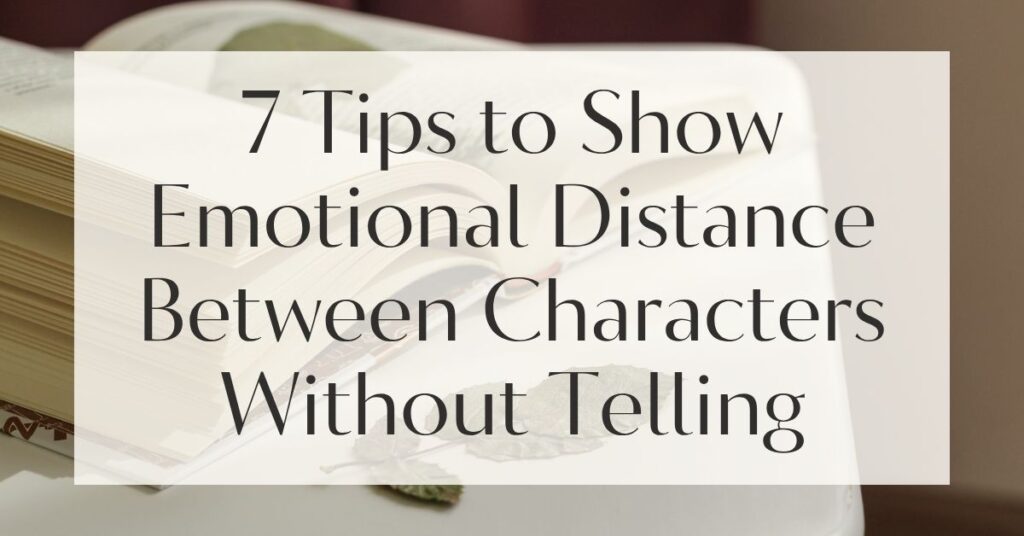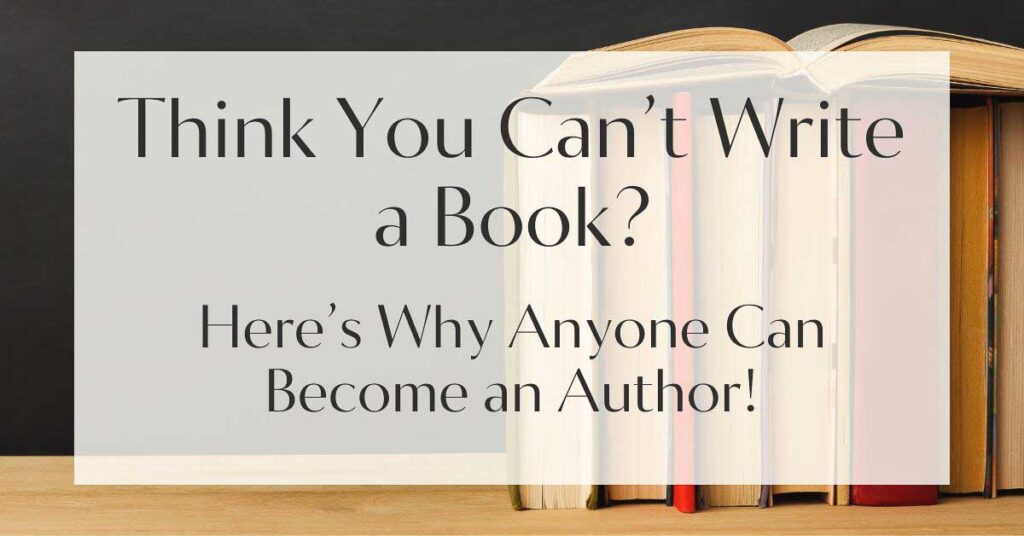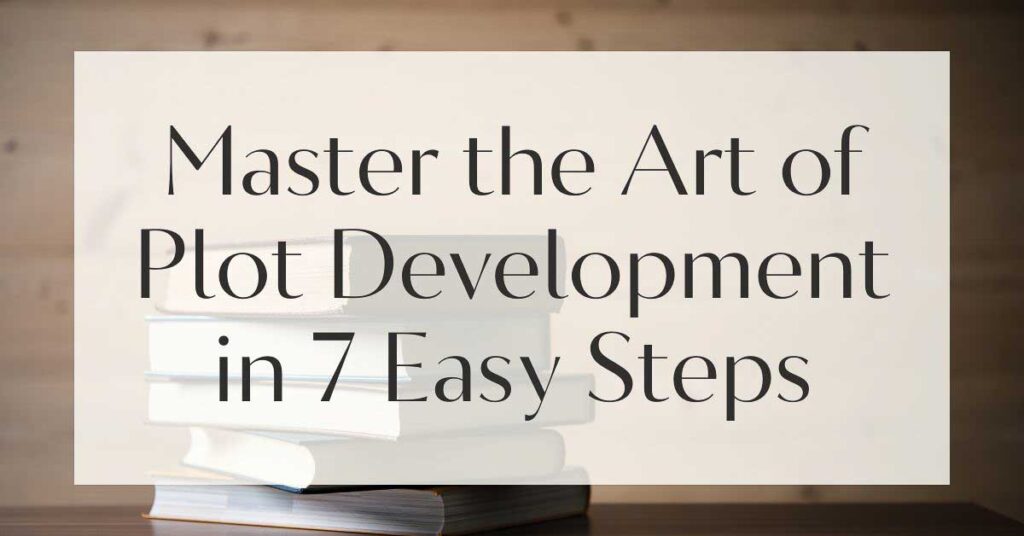Have you ever wondered why some stories grip you with a visceral intensity, while others leave you feeling detached? The secret often lies in how well the writer handles the emotional distance between characters.
Crafting compelling character dynamics without overtly telling the reader about their emotions is a skill that can transform your storytelling. Let’s delve into seven techniques that will help you master this art and breathe life into your narratives.
Understanding Emotional Distance Between Characters
In the realm of storytelling, the space between characters is more than just physical—it’s emotional.
This distance can be a chasm filled with unspoken words, or a narrow gap bridged by subtle gestures. Understanding how to manipulate this space is crucial for any writer aiming to create engaging and authentic character dynamics.
Defining Emotional Distance
Emotional distance refers to the intangible space between characters that is defined by their feelings, thoughts, and interactions.
It’s not just about what they say, but also what they don’t say, the looks they exchange, and the silences that speak volumes. This distance can manifest as tension, intimacy, estrangement, or camaraderie, depending on how it is portrayed.
For instance, consider two characters in a room. One may sit rigidly with arms crossed, avoiding eye contact, while the other fidgets nervously, glancing towards the door. These nonverbal cues hint at an emotional rift without a single word being spoken.
No marketing platform? No social following? No problem!
Publisher Rocket helps you market your debut novel like a pro.
It’s a gamechanger for debut authors – try it today!


Why Emotional Distance Matters in Character Dynamics
Emotional distance is a powerful tool in storytelling because it reflects the complexities of real human relationships. It adds depth to characters and makes their interactions more relatable and believable.
By showing rather than telling, you invite readers to engage with your story on a deeper level, allowing them to interpret and feel the characters’ emotions themselves.
When writing, think about the emotional journey of your characters. Are they moving towards each other or drifting apart? This will help you decide how to show the emotional distance between them.
Technique 1: Subtle Body Language
Body language is a universal language that speaks louder than words. It is one of the most effective ways to convey emotional distance between characters without explicitly stating it.

Recognizing Nonverbal Cues
Nonverbal cues include gestures, posture, facial expressions, and even the space characters maintain between each other.
A character might clench their fists, avoid eye contact, or lean away during a conversation. These subtle movements can reveal discomfort, anger, or disinterest, illustrating the emotional gap between them.
Observe people in real life to understand how they express emotions through body language. Take notes on how subtle shifts in posture or expression can change the mood of an interaction.
Examples of Body Language in Action
Consider a scene where two characters are having a heated argument. One might stand with their arms crossed, a defensive position that suggests they are closed off to the other’s perspective.
Meanwhile, the other character might pace back and forth, indicating agitation and a desire to escape the situation. These actions create a vivid picture of emotional distance without needing to describe their feelings directly.
Here’s a simple table to help visualize different body language cues and their potential meanings:
| Body Language | Possible Emotion |
|---|---|
| Arms Crossed | Defensiveness |
| Averted Gaze | Discomfort or Dishonesty |
| Pacing | Agitation |
| Leaning Away | Disinterest or Withdrawal |
Technique 2: Dialogue Nuances
Dialogue is not just about what is said, but how it is said. The nuances in conversations can subtly convey the emotional distance between characters.
Google Docs is for notes. Scrivener is for novels. Upgrade your writing game and try it for free today!

Crafting Subtext in Conversations
Subtext is the underlying meaning behind the words spoken. It’s what characters mean, but don’t say outright. For example, a character might say, “I’m fine,” but their clipped tone or the way they look away might suggest they are anything but fine. This contrast between words and delivery can create a palpable tension.
Using Silence Effectively
Silence can be as telling as words. A pause before answering, an unfinished sentence, or a sudden drop in conversation can speak volumes about the emotional state of characters. It allows readers to fill in the gaps with their own interpretations, making the scene more engaging and dynamic.
Experiment with dialogue tags and pauses. Sometimes, less is more. A simple “…” can convey hesitation or a lack of words to express deeper feelings.

Technique 3: Internal Conflict Representation
Internal conflict adds layers to a character’s personality and can highlight the emotional distance between characters through their inner thoughts and struggles.
Exploring Characters’ Inner Thoughts
Diving into a character’s mind allows readers to see their internal battles. This can be particularly effective when there is a stark difference between what a character thinks and what they say. For instance, a character might outwardly support a friend’s decision while internally doubting its wisdom.
Balancing Internal and External Responses
Balancing a character’s internal thoughts with their external actions can highlight emotional distance. If a character feels conflicted internally but behaves in a composed manner, it creates a tension that can be felt by the reader. This dichotomy between thought and action can illustrate complex character dynamics.
Technique 4: Environmental Influences
The setting can act as a mirror to the characters’ emotions, amplifying the emotional distance between characters through symbolism and atmosphere.
Setting as a Reflection of Emotional States
A stormy night can reflect turmoil, while a serene landscape might contrast with the characters’ inner chaos. Using the environment to echo or counterpoint the emotional state of characters can enhance the narrative’s emotional impact.

Symbolism in Character Interactions
Objects or settings in a story can symbolize the emotional distance between characters. A closed door might represent secrets, while a broken bridge could symbolize a fractured relationship. These symbols can subtly communicate the emotional undercurrents of a scene.
Technique 5: Reactions from Other Characters
Sometimes, the best way to show the emotional distance between characters is through the eyes of others. How secondary characters perceive the primary characters can add depth and perspective.
Using Observations from Peers
Secondary characters can provide insights into the emotional dynamics of the main characters. Their observations and comments can hint at underlying tensions or affections. This external viewpoint can offer readers a broader understanding of the character dynamics at play.
Feeling lost with your debut novel?
Fiverr Pro connects you with expert editors, designers, and marketers – everything you need to get your book ready for success!

Creating Contrast Through External Perspectives
By contrasting the perceptions of different characters, writers can highlight emotional distances. For instance, one character might view a relationship as harmonious, while another sees it as strained. This contrast can add complexity and intrigue to the narrative.
Technique 6: Physical Distance and Proximity
Physical space between characters can be a powerful indicator of emotional distance. How characters position themselves relative to each other can speak volumes.

The Impact of Space on Relationships
Characters standing close together might suggest intimacy or comfort, while those positioned apart might indicate tension or detachment. Even subtle shifts in proximity during a scene can convey changing emotional dynamics.
Visual Cues of Emotional Distance
Visual cues, such as characters turning away from each other or maintaining a fixed distance, can effectively communicate emotional distance. These physical manifestations of emotional states make the dynamics more tangible for the reader.
Technique 7: Flashbacks and Memories
Flashbacks and memories can provide context for the current emotional distance between characters, offering insights into past experiences that shape present interactions.
Integrating Past Experiences
Revealing past events that contribute to current emotional distances can deepen character backstories and make their actions more understandable. Flashbacks can be woven into the narrative to provide context and motivation.
How Memories Shape Present Interactions
Memories can influence how characters perceive and interact with each other. A shared history might bring characters closer or drive them apart, depending on the nature of those memories. Using these recollections can add layers to character relationships and enrich the story.

Final Thoughts on Showing Emotional Distance
Mastering the art of showing emotional distance between characters is a journey that can transform your writing. By employing these techniques, you can create character dynamics that resonate with authenticity and depth, drawing readers into a world where emotions are felt rather than told.
Encouraging Experimentation in Writing
Don’t be afraid to experiment with these techniques. Each story and set of characters is unique, and finding the right balance of showing and telling is key to bringing your narrative to life. Remember, the beauty of writing lies in its ability to evolve and adapt.
Building a Community of Supportive Writers
Engage with fellow writers to share insights and experiences. Discussing challenges and successes in portraying emotional distance can foster a supportive community that encourages growth and creativity. Together, we can explore the endless possibilities of storytelling.








